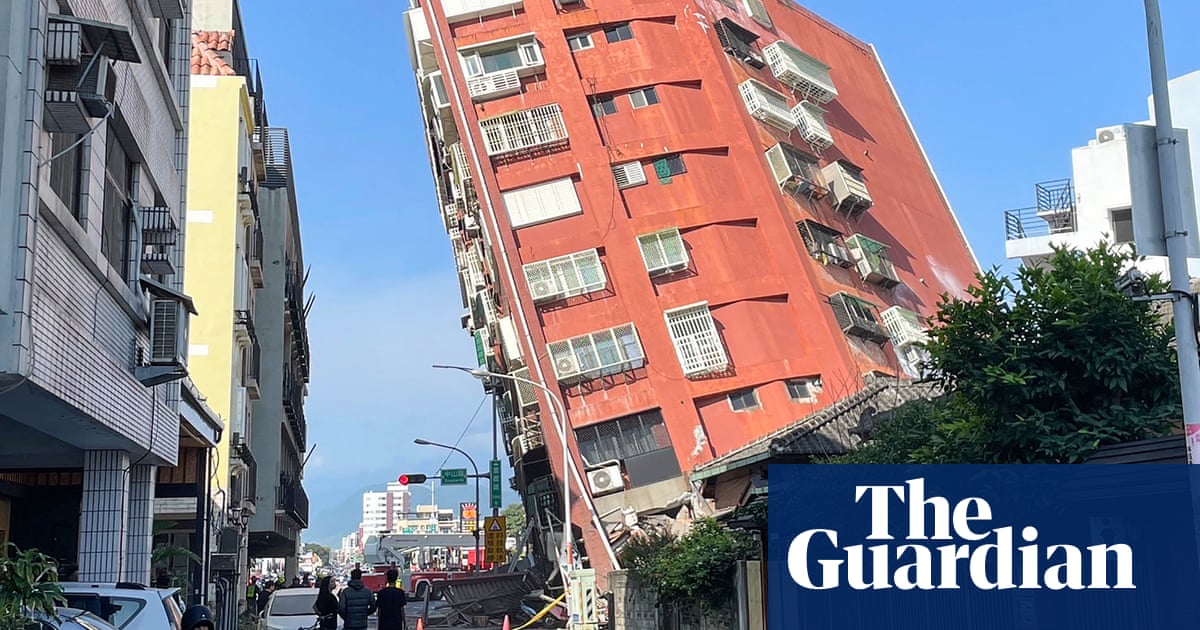
The Greek island of Crete has been hit by an earthquake killing one man and injuring 20, while damaging homes and churches and causing rock slides near the country’s fourth-largest city.
The quake, which had a preliminary magnitude of at least 5.8, sent people fleeing into the streets in the city of Heraklion, where schools and older buildings were evacuated.
Repeated aftershocks – described by witnesses as feeling like small explosions – rattled the area, adding to damage in villages near the centre of the quake where a state of emergency was called as authorities said thousands would be forced to spend the night in hotels and tents.
The earthquake’s strength appeared to take seismologists by surprise. “[It] was a bolt out of the blue,” Prof Ethymios Lekkas, who heads the faculty of geology and geoenvironment at the University of Athens, told Greek TV. “The scientific community thought the phenomenon [of heavy seismic activity] in the region was over. We were all mistaken as the earthquake was totally unforeseen.”
It was too early, Lekkas said, to predict whether a stronger one would follow.
Dr Stephen Hicks, a seismologist at Imperial College London, described the tremor as the most powerful to hit the Mediterranean island since 1959.
The Athens Geodynamic Institute said the quake struck at 9.17am (6.17am GMT), with an epicentre 246km (153 miles) south/south-east of the Greek capital, Athens.
Hospital officials said 20 people had been treated for injuries.
International and domestic flights to Heraklion airport were unaffected by the quake, while the region’s hoteliers’ association said there was no serious damage to any hotels in the area, which includes many popular holiday resorts.
There were widespread reports of holidaymakers in resorts close to Heraklion, which is particularly popular among British tourists, fleeing hotels as the quake struck.
Municipal construction vehicles helped clear a path for the emergency services, scooping up rubble and knocking down a badly damaged apartment block balcony.
“This is not an event that occurred without warning,” said Gerasimos Papadopoulos, a seismologist, on Greece’s state broadcaster, ERT.
“We have seen activity in this region for several months. This was a strong earthquake, it was not under sea but under land and affecting populated areas.”
The European-Mediterranean Seismological Center and the US Geological Survey gave the quake a preliminary magnitude of 6.0, with an epicentre 7km (four miles) north of the village of Thrapsano. It is common for different seismological institutes to give varying magnitudes for an earthquake.
Greece’s climate crisis and civil protection minister, Christos Stylianides, described the situation as “dramatic,” saying it was impossible to forecast how long aftershocks would continue.
A Cypriot former EU humanitarian affairs commissioner who assumed the helm of the newly created climate crisis ministry this month, Stylianides – who inspected the area after travelling to Crete – said one man had been killed.
The man was pulled from the rubble of a partly collapsed church in the village of Arkalochori, close to the epicentre, authorities said. Local media said the victim was a 65-year-old builder who had been working inside the church when the roof collapsed on him.
Giannis Oikonomou, a government spokesperson, said there were no reports of people missing or trapped under rubble.
Stylianides said a state of emergency was being declared in the area. Local media said hundreds of homes had been damaged, including more than half the houses in Arkalochori.
Lekkas, who also heads Greece’s Earthquake Planning and Protection Organisation, said inspections of critical buildings such as schools and hospitals had already begun.
“We are urging people who live in damaged older buildings to remain outdoors. One aftershock can cause a collapse,” Lekkas said from Crete. “We are talking about structures built before 1970. Structures built after 1985 are built to a higher standard that can withstand the effect of an earthquake.”
Local media said hundreds of homes had been damaged, including more than half the houses in the wider area of Arkalochori.
Civil protection officials said tents were being set up for residents whose homes had been damaged, with capacity for up to 2,500 people.
The fire department said it was flying 30 members of its disaster response units with search dogs and specialised rescue equipment to Crete, while all of its disaster response units and fire department services on Crete were placed on general alert.
Numerous aftershocks have been reported in the area, with the EMSC giving a preliminary magnitude of 4.6 for the two strongest.










